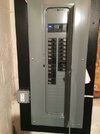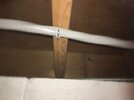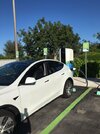That was expensive? Did they need to upgrade your service?Same here! I used a local NJ licensed electrician recommended by Tesla. Yes they were expensive! Yes they did excellent work. They purchase all of the required mateiral at a local electrical supply house and not at cheaper big box stores. They filled out the required load/data form and submitted it to NJ PSE&G so I was able to receive the PSE&G $1500 rebate. They also arranged for the required local permit and inspection.
You get what you pay for in this world.
I think my install is expensive, but it also requires a service upgrade from 100A to 200A. It's also a little over 50 feet from the new panel to the garage, where the installation will be.





